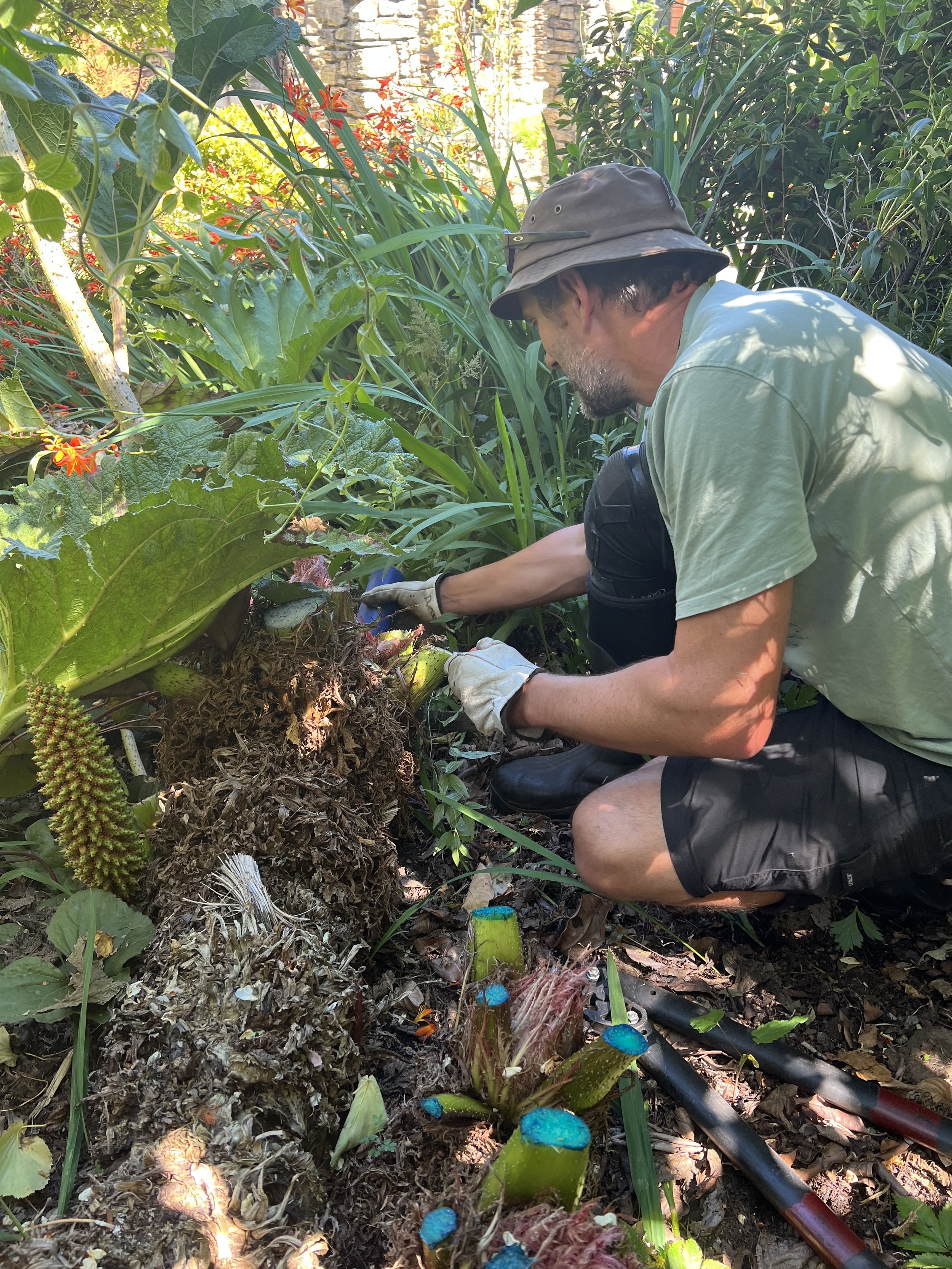Gunning for gunnera part II
Managing the prolific weed Gunnera tinctoria
Part II
Big, big, big gunnera leaves
The removal and management work
A ‘cut and paste’ method is being used to manage and remove the gunnera found along Bullock Creek and its tributaries. Firstly, the plant stalks are cut down with shears and saw; some of the stalks are more than 15cm in diameter and can weigh at least 7kg or more, depending on how big the leaves are. Secondly, after the stalks have been cut as close to the ground as possible, a herbicide paste is applied directly to the exposed stem, which works to completely kill the plants, spreading through the remaining vascular system. Given that the application of herbicide is being done in the close vicinity of the creek and nearby to other non-target plants, Paul and Ed are very careful to ensure the targeted and judicious use of the herbicide to the gunnera being cut down.
Ed pasting the stumps
This combination of physical and chemical management of gunnera helps to firstly manage existing stands of the plant, whilst also reducing their ability to spread and grow elsewhere. While the cutting and pasting method is effective, it is important to note that even once the plants have been cut down and poisoned, the remaining stumps and root systems can still impact the immediate vicinity and the ability of other plants to repopulate that area. Therefore, it is of critical importance to identify and manage gunnera when it is a smaller plant, to avoid the potential larger-scale problems they can cause as they grow into mature, and very large, plants.
Cutting the last one…a big job
After being cut down, the stalks and leaves of gunnera are taken to the green waste disposal site where they are then mulched and process to become compost or topsoil. A nice closed loop from foe to friend in the garden.
A trailerful of gunnera, bursting at the seams
What can I do to help?
If you’re a landowner or have responsibility for any creek-side land, you can do your bit by removing gunnera where and when you see it. You can also contact us for more information or for help in the process. For more information about managing gunnera check out this page from ORC: https://www.orc.govt.nz/environment/biosecurity-and-pests/plant-pests/gunnera/
If you love the wetlands and waterways regeneration work we do, you may want to volunteer with us or you may want to make a donation to help continue our work. Check out our website for more information www.fobc.kiwi
With thanks to Paul and Ed, Central Lakes Trust and Wānaka Rotary, and cooperation from local landowners enabling the important weed removal work in the name of ecosystem and waterway health.
References
Environment Southland Regional Council. (n.d.). Chilean rhubarb. https://pesthub.es.govt.nz/?pwsystem=true&pwid=543&sort=alpha
New Zealand Plant Conservation Network. (2025). Gunnera tinctoria.
https://www.nzpcn.org.nz/flora/species/gunnera-tinctoria/
Otago Regional Council. (2025). Gunnera. https://www.orc.govt.nz/environment/biosecurity-and-pests/plant-pests/gunnera/




